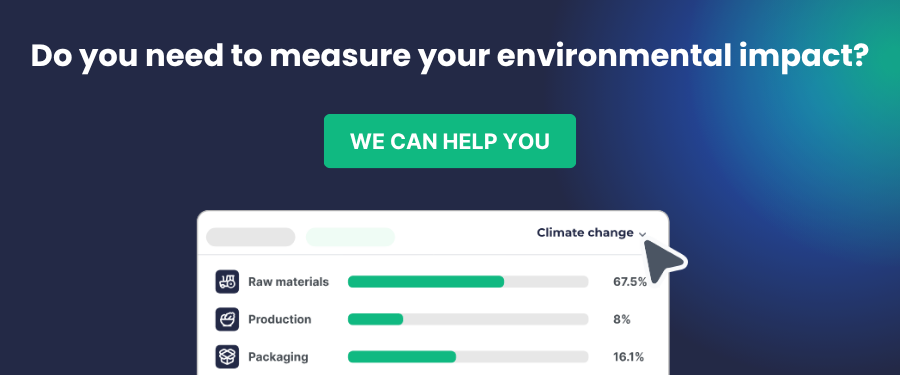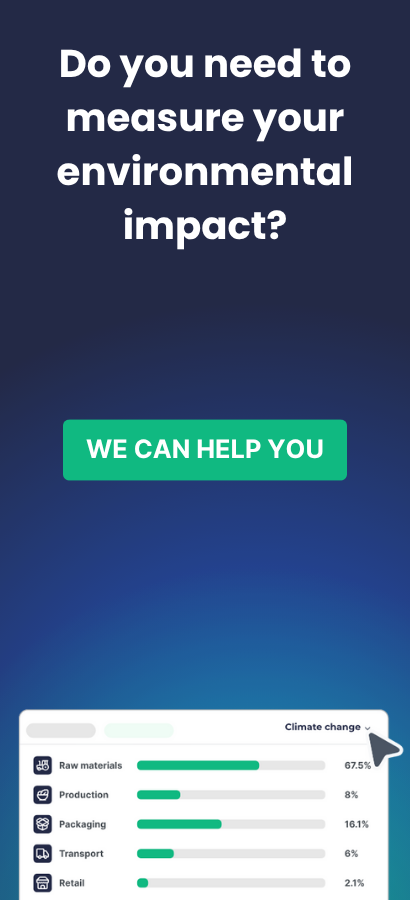The carbon footprint is a key metric for assessing a company’s environmental impact, divided into three scopes according to the Greenhouse Gas Protocol. Scope 3 is the most complex to measure since it includes all indirect emissions along the value chain, from suppliers to distribution and final product use. With Europe’s commitments to reduce greenhouse gas emissions, mitigate climate change, and decarbonize the economy, companies are increasingly required to report these data accurately. In this article, we explain how to measure scope 3 carbon footprint and how to request the necessary information from your suppliers.
What is scope 3 carbon footprint?
Scope 3 encompasses all indirect greenhouse gas (GHG) emissions that come from sources not directly controlled by the company. Unlike scope 1 (direct emissions) and scope 2 (indirect emissions from purchased energy), scope 3 covers a wide range of activities along the supply chain.
The most common categories of scope 3 emissions include:
- Production and transportation of raw materials.
- Business travel and employee commuting.
- Use and disposal of sold products.
- Waste management generated by the company and its suppliers.
The main challenge of scope 3 is that emissions come from suppliers and third parties, requiring companies to work closely with their supply chain to collect reliable data.
Why measuring scope 3 carbon footprint is important
Scope 3 can represent a large proportion of a company’s total emissions, especially in sectors like food, fashion, and manufacturing. Ignoring these emissions may provide an incomplete view of the company’s climate impact.
Benefits of measuring scope 3 carbon footprint:
- Regulatory compliance: Ensures compliance with new regulations, both European and national.
- Transparency and reputation: Demonstrates to investors and customers that your company is committed to comprehensive decarbonization.
- Identification of improvement opportunities: Identifies areas in the supply chain where emissions and operating costs can be reduced.
- Climate risk reduction: Minimizes exposure to financial and reputational risks associated with climate change.
How to measure scope 3 carbon footprint
Measuring scope 3 carbon footprint involves collecting detailed data on the activities of your suppliers and other stakeholders in the supply chain. Here’s a step-by-step approach to do it effectively.
- Identify relevant scope 3 categories for your business
The first step is to determine which supply chain activities generate scope 3 emissions. The Greenhouse Gas Protocol provides 15 categories covering most business activities, from goods and services procurement to transportation and distribution. Assess which ones are most relevant for your company.
Example: If you are a food company, you might focus on emissions related to raw material production, transportation, and product distribution.
- Prioritize the most critical suppliers
Not all suppliers will have the same impact on your carbon footprint. Prioritize those responsible for the largest emissions or those with whom you have a significant business relationship.
Tip: Group your suppliers by product or service type and business volume. This will help you concentrate efforts on those with the greatest influence on your scope 3.
- Request emissions data from your suppliers
Once you’ve identified key suppliers, the next step is to request their emissions data. Be clear in your requests and provide guidance on collecting this information.
What information should you request?
- Energy consumption data: Ask suppliers to detail their energy consumption in operations related to the products or services they provide.
- Direct emissions: Request information on direct emissions generated during manufacturing, transportation, or other processes.
- Material usage: Inquire about the use of recycled, sustainable, or low-environmental-impact materials.
Suggested format for data request:
Provide suppliers with a standardized data collection template, including:
- Source and energy consumption (kWh).
- Emission factors by category (tCO2e per ton produced or kilometer transported).
- Information on transportation and distribution (distance traveled, type of vehicle used).
Additionally, specify that these metrics should follow the calculation standards established by the Greenhouse Gas Protocol or similar frameworks to ensure consistency in reporting.
- Implement a digital tracking system
Manually tracking scope 3 data can be inefficient and prone to error. An effective solution is to use a digital ESG management platform that allows suppliers to upload their data in a structured format and automates emissions calculations.
Advantages:
- Standardizes data formats among suppliers.
- Facilitates verification and audit of received data.
- Allows efficient generation of sustainability reports compatible with the CSRD.

Verifying scope 3 data
Once you have received data from your suppliers, it is crucial to verify its accuracy. This can be done through third-party audits or by internally reviewing the collected data. Additionally, some standards, such as ISO 50001 or ISO 14064, offer guidelines for verifying and managing energy consumption and carbon emissions.
Steps for data verification:
- Review for inconsistencies: Compare received data with industry standards or previous values. If a supplier reports a significant emissions reduction without a clear explanation, further investigation is necessary.
- External audits: Consider hiring external auditors to verify data authenticity. This is particularly important if the data is critical to your sustainability report.
- Sustainability certificates: Request suppliers to present recognized environmental certifications (e.g., ISO 14001 or the Carbon Trust standard) to ensure the validity of their emissions management practices.
How to facilitate supplier collaboration for measuring scope 3
Collaboration and mutual support are essential for obtaining reliable scope 3 data. Here are some strategies to strengthen this collaboration.
- Train your suppliers
Many suppliers, especially small companies, may be unfamiliar with how to measure their carbon footprint. Providing sustainability training can help improve their data collection practices.
Suggestion: Organize webinars or workshops on how to calculate scope 3 emissions and the importance of these data for corporate sustainability.
- Create incentives for compliance
Offering incentives, such as long-term contracts or preferences in future bids, can motivate suppliers to comply with your ESG data requests.
Tip: Include specific clauses in your contracts that require suppliers to periodically report carbon emissions data.
- Encourage innovation and continuous improvement
Work with suppliers to reduce scope 3 emissions over time. Identify opportunities to improve energy efficiency, use sustainable materials, or reduce transportation distances.
Conclusion
Measuring scope 3 carbon footprint is a crucial step in advancing your company’s sustainability efforts. Close collaboration with suppliers, the use of technological tools, and rigorous data verification are essential to ensuring accurate and credible ESG reporting. By following these strategies, your company can reduce its environmental impact and strengthen its competitive position in an increasingly sustainability-focused market.



